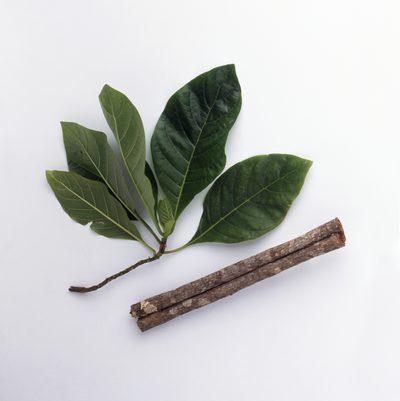How Well Do You Know Quinine?

Quinine is a popular medication that is effective in the treatment of malaria caused by the Plasmodium falciparum. It affects the metabolism of haemoglobin in the malaria parasite.
- 1.
Quinine can be administered intravenously and
- A.
Orally
- B.
Subcutaneously
- C.
Rectally
- D.
Topically
Correct Answer
A. OrallyExplanation
Quinine can be administered orally because it is available in the form of tablets or capsules that can be swallowed. This route of administration is convenient and commonly used for medications that are absorbed through the gastrointestinal tract. By taking quinine orally, it can be easily absorbed into the bloodstream and distributed throughout the body to exert its therapeutic effects.Rate this question:
-
- 2.
Quinine replaces which of these
- A.
Chloroquine
- B.
Artesunate
- C.
Paracetmol
- D.
Tonic water
Correct Answer
B. ArtesunateExplanation
Quinine is a medication used to treat malaria. It is often used as a replacement for Chloroquine, another medication used for the same purpose. Artesunate, on the other hand, is a different type of antimalarial medication. Therefore, Quinine does not replace Artesunate. Paracetamol is a common pain reliever and fever reducer, not related to the treatment of malaria. Tonic water contains a small amount of quinine, but it is not a direct replacement for quinine medication.Rate this question:
-
- 3.
Which of the following is not a side effect of quinine?
- A.
Ringing in the ears
- B.
Sweating
- C.
Laboured breathing
- D.
Trouble seeing
Correct Answer
C. Laboured breathingExplanation
Laboured breathing is not a side effect of quinine. Quinine is commonly used to treat malaria and has several side effects including ringing in the ears, sweating, and trouble seeing. However, laboured breathing is not listed as a known side effect of quinine usage.Rate this question:
-
- 4.
Quinine can increase one's likelihood of suffering from
- A.
Hyperkeratosis
- B.
Halitosis
- C.
Sunburn
- D.
Migraines
Correct Answer
C. SunburnExplanation
Quinine is a medication commonly used to treat malaria. However, it has been found to increase one's sensitivity to sunlight, making the skin more prone to sunburn. This is known as photosensitivity, and it occurs because quinine can cause the skin to become more reactive to UV radiation. Therefore, individuals taking quinine may experience a higher likelihood of suffering from sunburn when exposed to the sun.Rate this question:
-
- 5.
Quinine extract was first obtained in
- A.
1804
- B.
1808
- C.
1810
- D.
1820
Correct Answer
D. 1820Explanation
Quinine extract was first obtained in 1820. This means that it was discovered and extracted for the first time in that year.Rate this question:
-
- 6.
Quinine can be obtained from the bark of
- A.
Oak tree
- B.
Mahogany tree
- C.
Guava tree
- D.
Cinchona
Correct Answer
D. CinchonaExplanation
Cinchona is the correct answer because it is well-known for being the primary source of quinine. Quinine is a natural substance used to treat malaria and other conditions. While oak, mahogany, and guava trees have their own uses and benefits, they are not associated with the production of quinine. Therefore, Cinchona is the most suitable option for obtaining quinine from tree bark.Rate this question:
-
- 7.
Quinine is used to treat the following ailments except
- A.
Migraines
- B.
Arthritis
- C.
Lupus
- D.
Malaria
Correct Answer
A. MigrainesExplanation
Quinine is a medication that is primarily used to treat malaria, as it has antimalarial properties. It is also used to treat lupus, as it can help reduce inflammation and alleviate symptoms. Additionally, quinine can be used to treat arthritis, as it can provide relief from joint pain and inflammation. However, quinine is not typically used to treat migraines, as it does not have specific properties that target migraine symptoms. Therefore, the correct answer is migraines.Rate this question:
-
- 8.
Concerning the preparations of quinine, which of these is odd?
- A.
Quinine hydrochloride
- B.
Quinine bisulfate
- C.
Quinine gluconate
- D.
Quinine potassiumchloride
Correct Answer
D. Quinine potassiumchlorideExplanation
The odd one out in this list is Quinine potassiumchloride. This is because the other three options (Quinine hydrochloride, Quinine bisulfate, and Quinine gluconate) are all salts of quinine with different acids, while Quinine potassiumchloride is a combination of quinine and potassium chloride.Rate this question:
-
- 9.
Quinine has a characteristic
- A.
Sweet taste
- B.
Bitter taste
- C.
Sour taste
- D.
Salty taste
Correct Answer
B. Bitter tasteExplanation
Quinine is well-known for its bitter taste. It is a natural compound found in the bark of the cinchona tree and is commonly used as a medication to treat malaria. Quinine's bitterness is often described as intense and lingering, making it difficult for many people to consume without dilution or mixing it with other ingredients. Its bitter taste is also utilized in the production of certain beverages, such as tonic water, which is often mixed with gin in cocktails.Rate this question:
-
- 10.
Concerning the side effects of quinine that pertains to the heart, which of these is odd?
- A.
Heart block
- B.
Atrial fibrillation
- C.
Conduction defects
- D.
Cardiac shock
Correct Answer
D. Cardiac shockExplanation
Cardiac shock is the odd one out among the given options because it is not a recognized side effect of quinine. Quinine is known to have potential side effects on the heart, such as heart block, atrial fibrillation, and conduction defects, but cardiac shock is not typically associated with the use of quinine.Rate this question:
-
Quiz Review Timeline +
Our quizzes are rigorously reviewed, monitored and continuously updated by our expert board to maintain accuracy, relevance, and timeliness.
-
Current Version
-
Mar 21, 2023Quiz Edited by
ProProfs Editorial Team -
Mar 09, 2018Quiz Created by
Timmy198
 Back to top
Back to top












